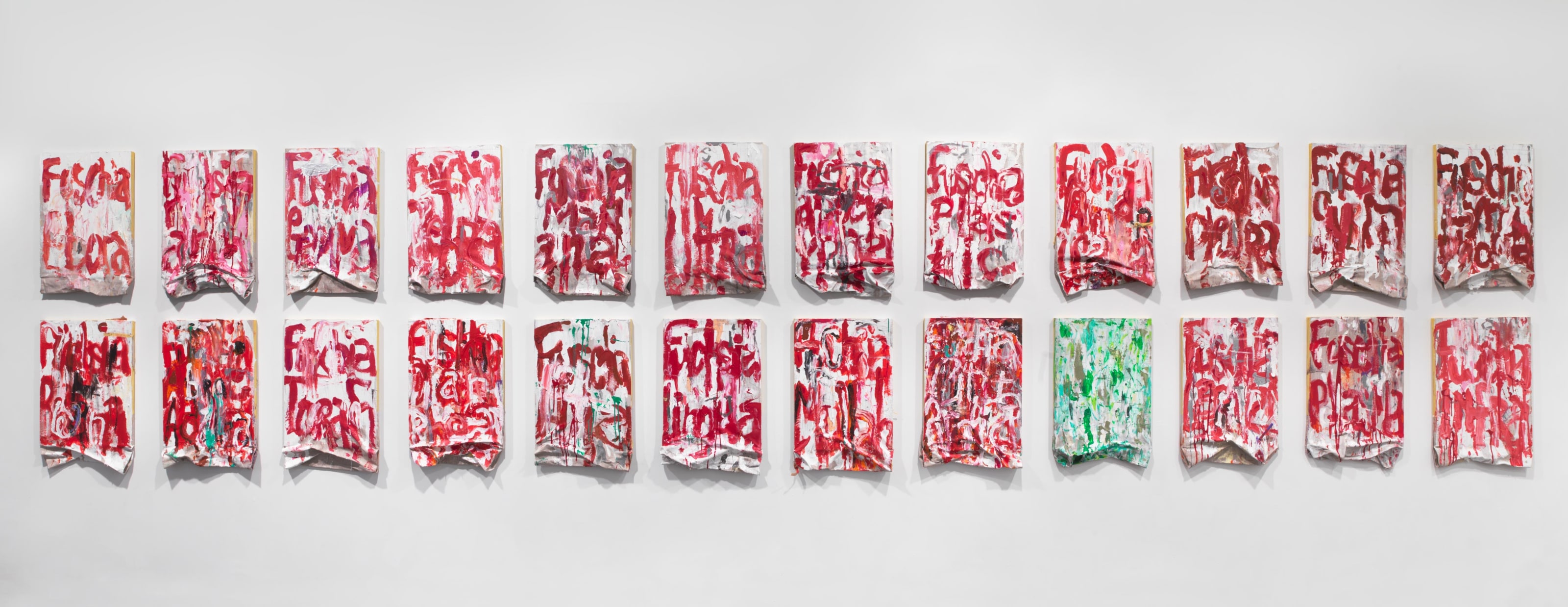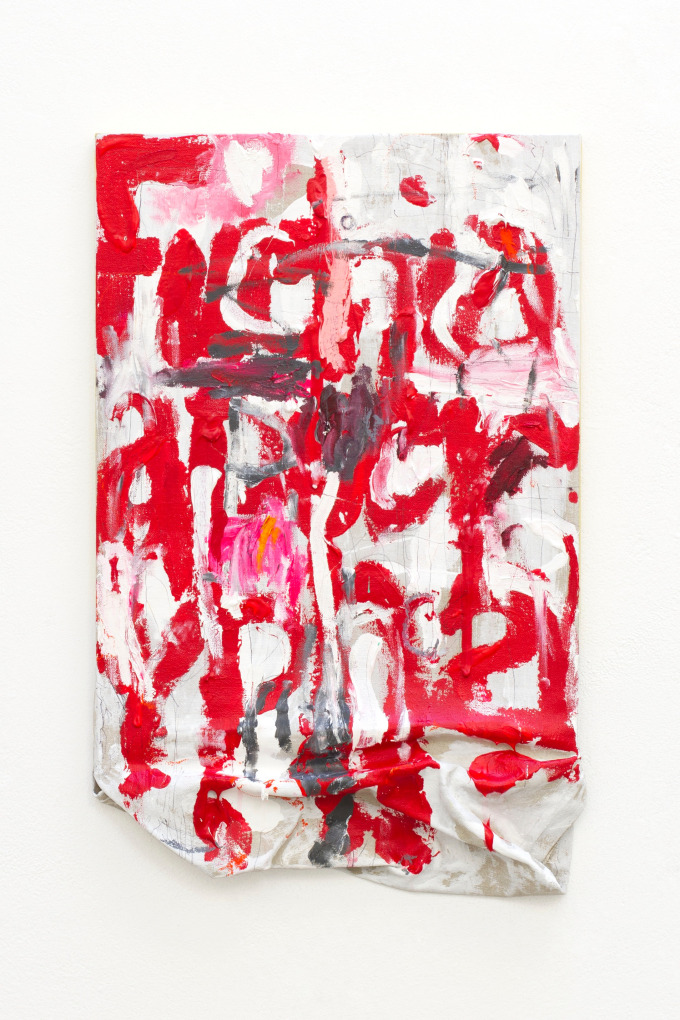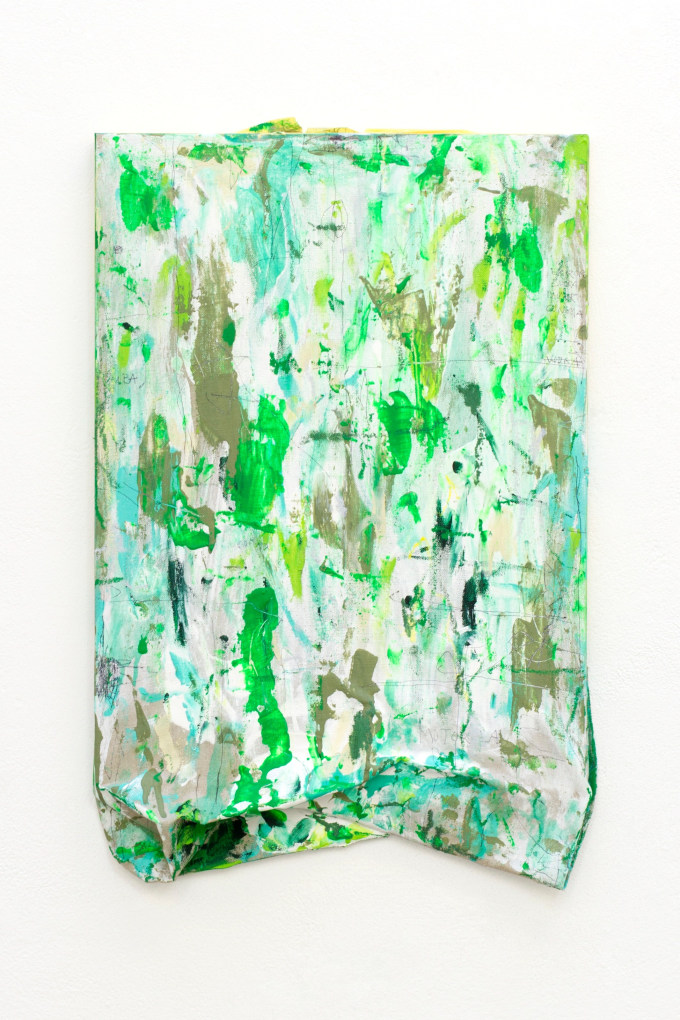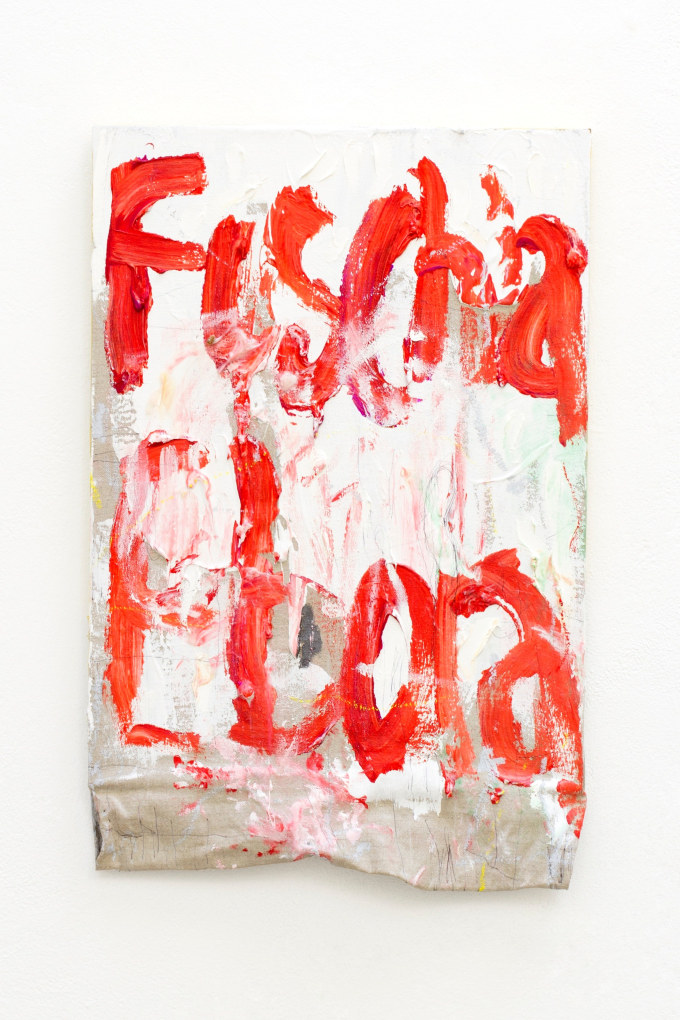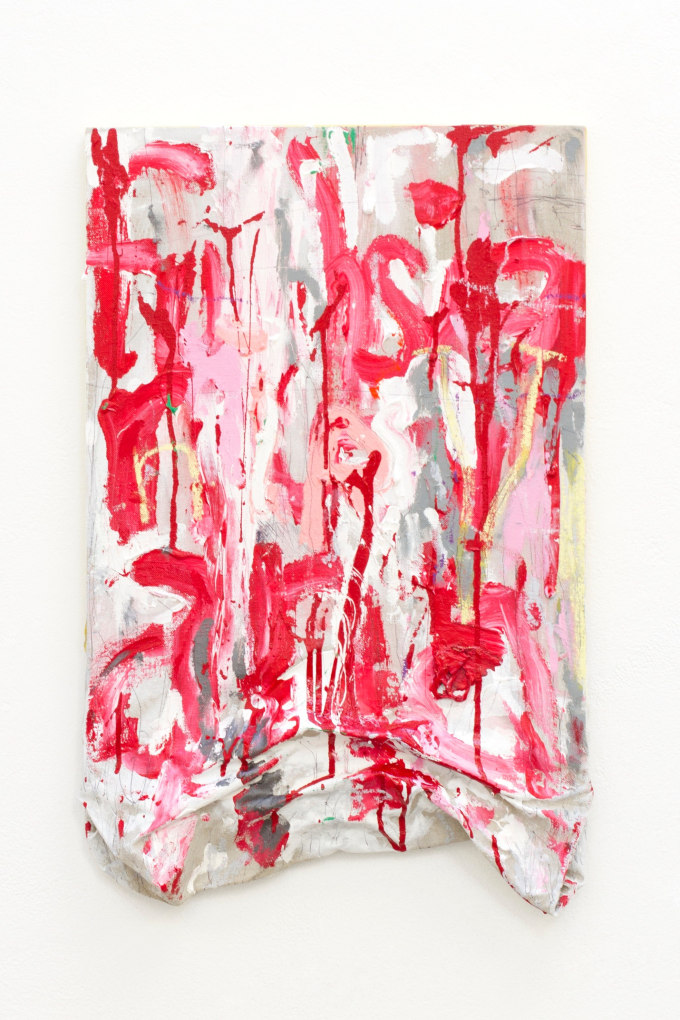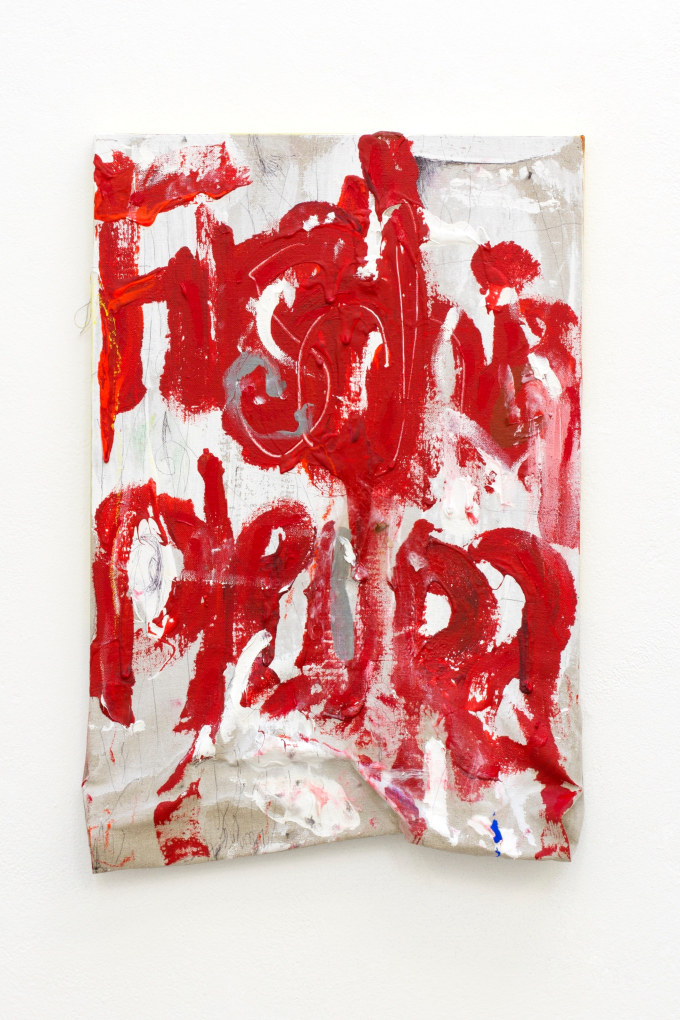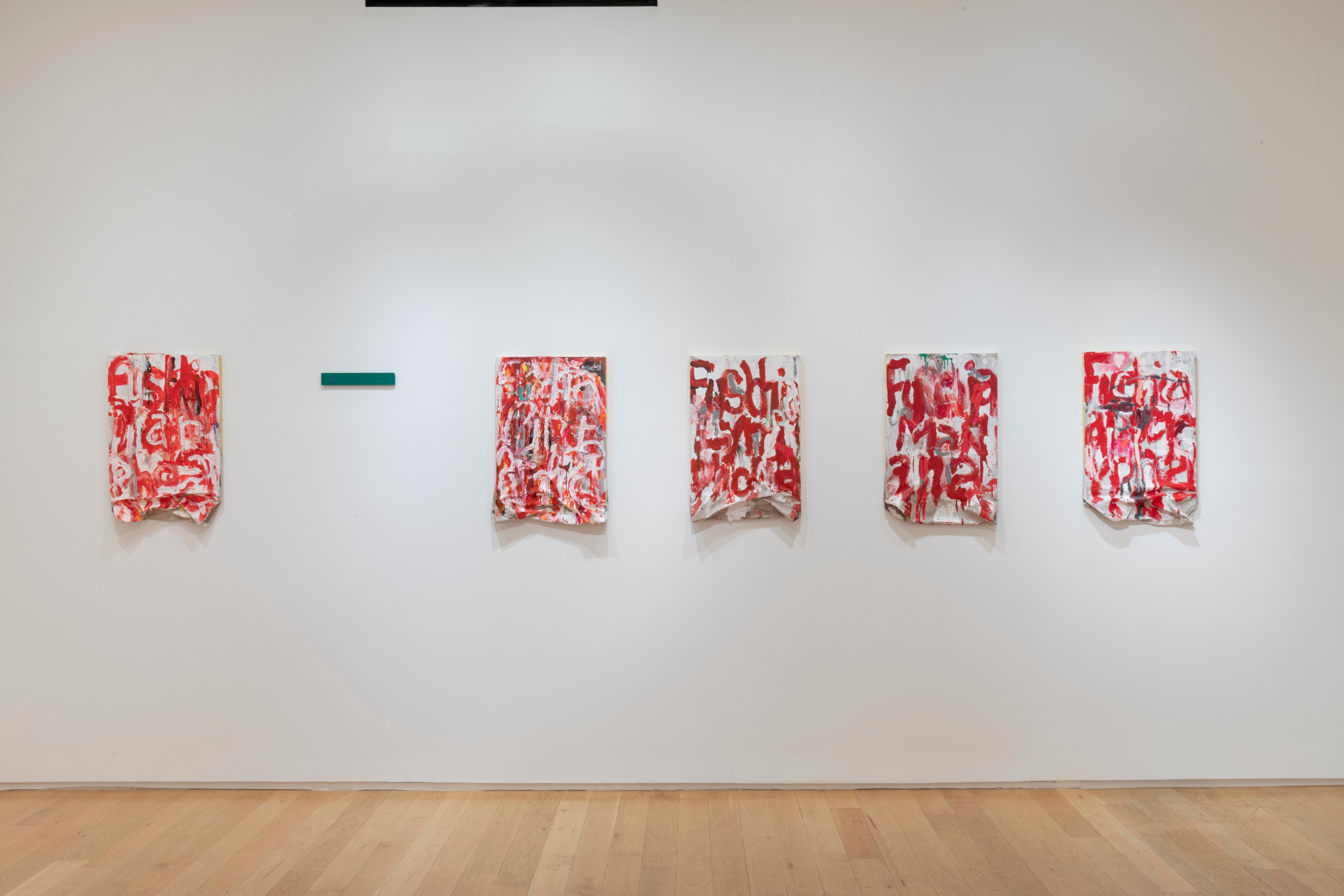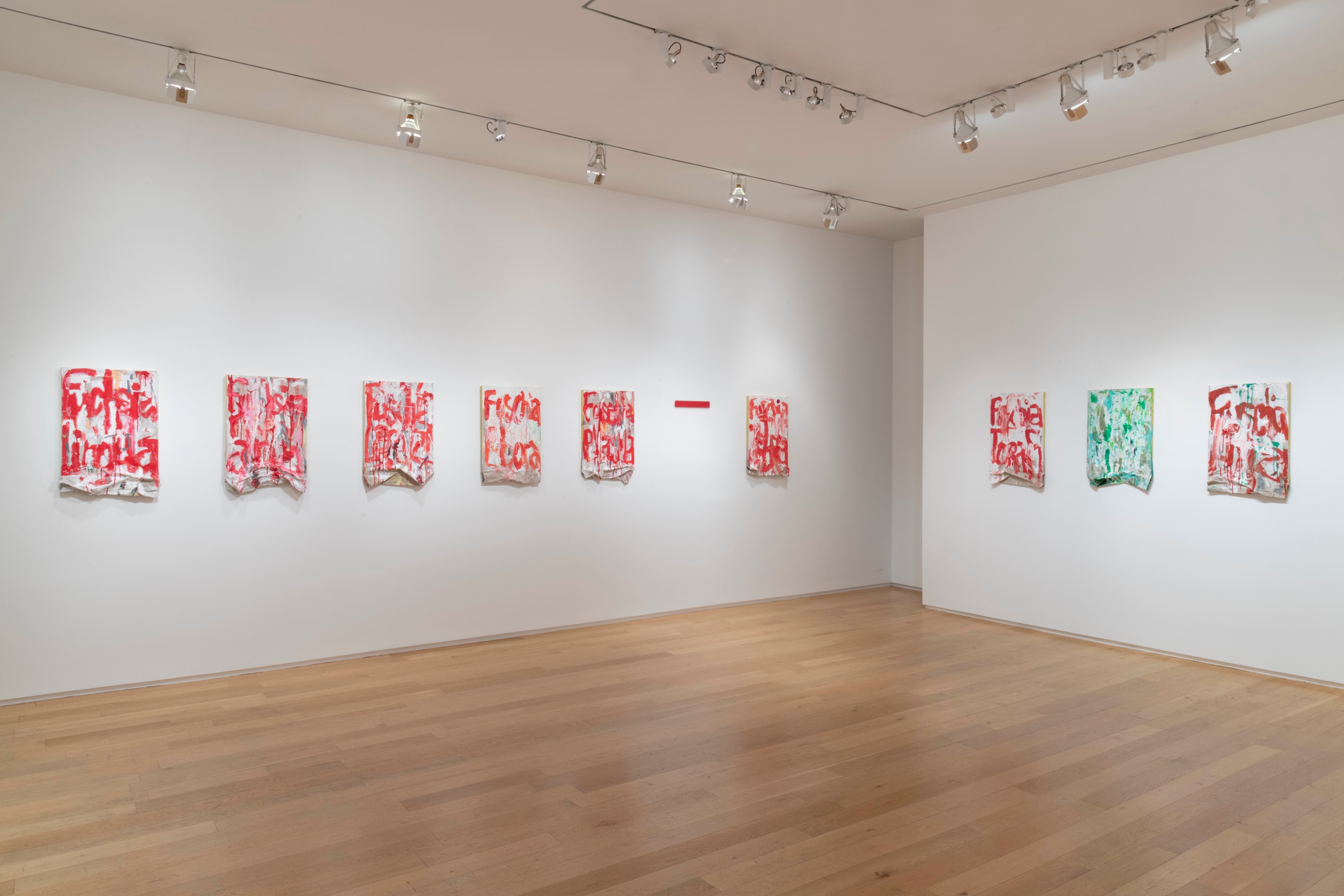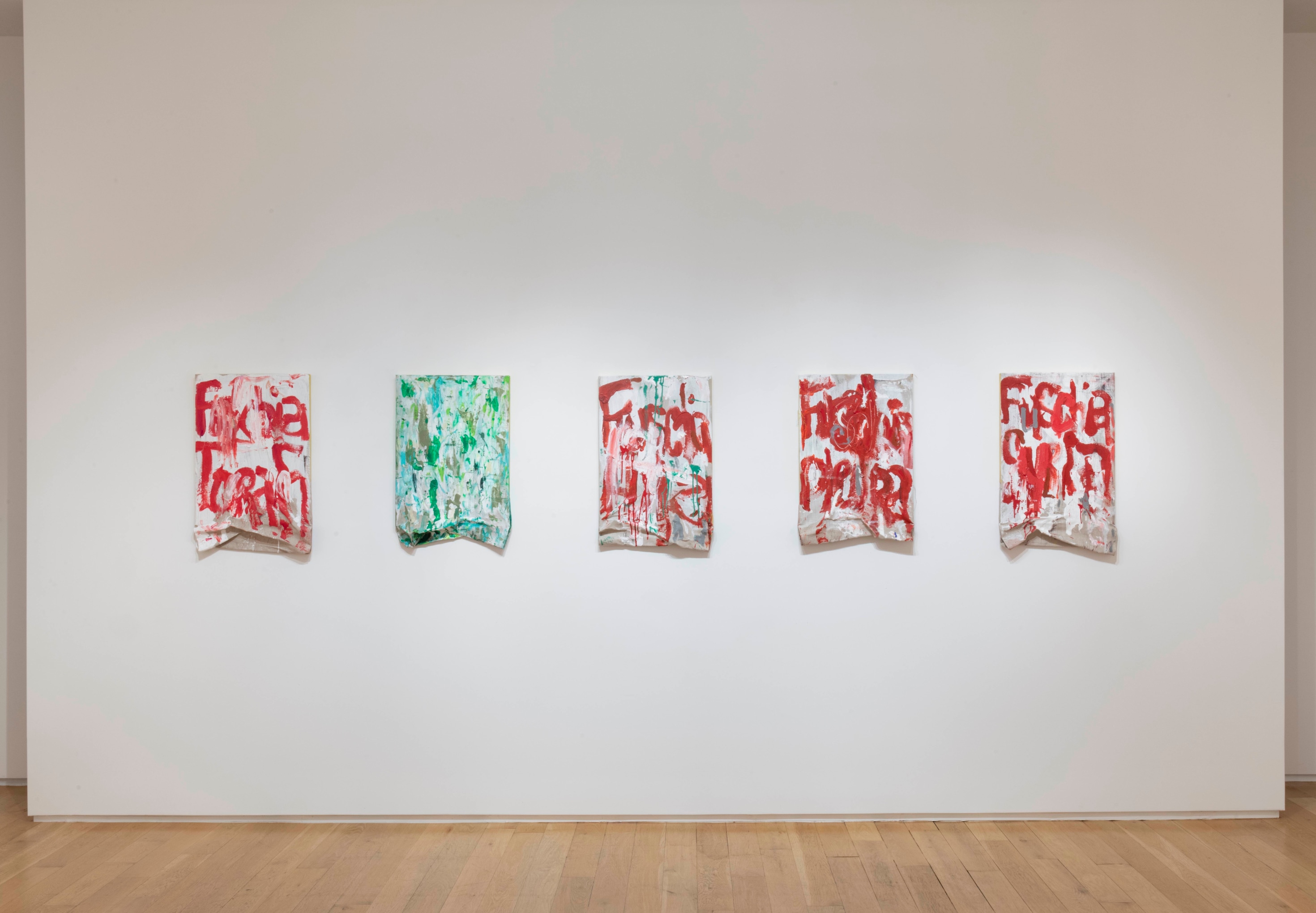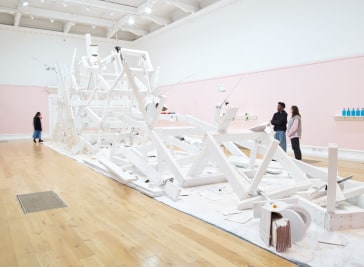
Circa is a set of 24 paintings in the continuity of the Skin Set Paintings and the Skin Set Drawings, an ongoing body of works Pope L. started in 1997. Circa was exhibited for the very first time at Pope L.’s major solo show at MOCA, Los Angeles (March 20, 2015 to June 28, 2015).
Circa means “around, approximately”. In this body of works, this word underlines
the uncertainty and approximations of language, highlighted by the various
spellings of “fuchsia” used for the title of each one of the 24 individual paintings in
the whole ensemble that constitutes Circa.
“Fuchsia” is a purplish/red color named after a flower. As a secondary color it
mixes red and blue, yet as the plant it takes its name from, its hues vary. As such, there is a visual ambiguity and uncertainty when confronted with this color: we think we know right away what the color “fuchsia” is, yet its tones fluctuate in nature and in language.
All the variant spellings of “fuchsia” in the paintings’ titles are paired with a
word ending/sounding in “-a”. Some words reflect current world events, such as
“Ebola” or “Syria”; others refer to the body (“Pleura”, “Plasma”) and the diseases
it can be subjected to, as in the aforementioned “Ebola”, or “Lymphoma”.
Some refer to religions (“Torah”, “Mullah”, “Nirvana”).
They demonstrate how meaning can change depending on circumstances and
context: “Nirvana” can refer both to a tenet of Buddhism and to a 1990s American band. Syria is the name of a country that in 2015 evokes the atrocities committed on its soil during the current war, but that a few years ago might have primarily called to mind ancient monuments. There is also an odd word out not ending in -a, “Plastic”, which is unexpectedly not paired with the one dissembling green painting in the group. Thus, an additional element of uncertainty is added to the ensemble.
Pictorially, the paintings in Circa sit ambiguously between the painterly effects of Abstract Expressionist outliers such as Joan Mitchell or Philip Guston, and the loose, raw effects of Arte Povera, in no small part due to their unstretched bottoms. Because of their use of text and the way the wordplay progresses between the titles, they’re also situated somewhere between Concrete Poetry and Conceptual Art. Yet because of the very uncertainty at work that gives its name to the cycle, they reflect the contemporary time during which they’ve been created.
This uncertain element is at the core of Pope L.’s work with painting and language, and belongs to a larger practice that comprises performance, video, sculpture, installation, objects, drawings and paintings made by an artist who stated that his “primary interest is the gestural aspect of language as enunciation, as performance, intention and desire”. If singled out for their medium, their raw, painterly aspect bears the imprint of the physical performance of the artist inscribing language in a pictorial object, yet they are part of a general practice where each element, each medium used, each object created participates of an investigation into language, and the body.
Text by Noëllie Roussel, 2015
© Noëllie Roussel, 2015


